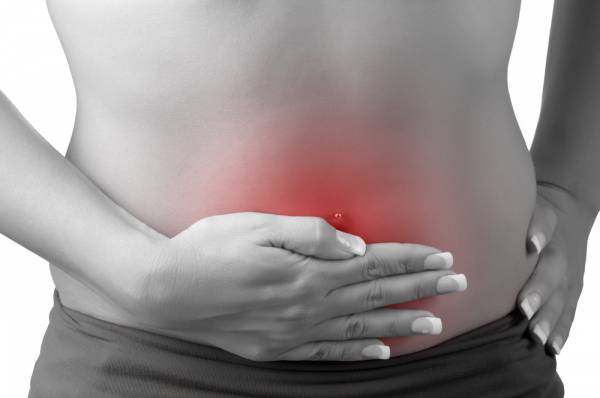Whether or not they are athletes, women face health issues specific to their sex. This series of articles will touch on major aspects of women’s health, beginning with endometriosis.
This condition can cause intense menstrual pain, cramping, irregular periods, and heavy flow during menstrual cycles. You will learn diagnostic and treatment options to seek out if you feel you may be suffering from endometriosis.
What is Endometriosis?
Endometriosis is a condition in which endometrial tissue is present in abnormal locations in the pelvic cavity and abdominal region. Generally, endometriosis is thought to result from endometrial cells passing from the uterus through the uterine tubes into the pelvic cavity. Endometrial cells then invade the peritoneum of the pelvic cavity.
Periodic inflammation of areas where the endometrial cells have invaded occurs because the endometrium (the lining of the uterus) is sensitive to estrogen and progesterone. Endometriosis is often the cause of abdominal pain associated with menstruation since blood cannot leave through the normal exit. Because of this, it irritates nearby tissues causing pain and, in severe cases, scarring.
Almost any organ in the pelvic cavity can be affected by endometriosis, from the ovaries to the large intestine and abdominal region. Roughly one in ten women of childbearing age are affected by endometriosis. It can cause debilitating pain, heavy menstrual periods, and fertility problems. Up to 20% of women with endometriosis have concurrent chronic pain conditions including irritable bowel syndrome, interstitial cystitis/painful bladder syndrome, fibromyalgia, and migraines.
How Is Endometriosis Diagnosed?
There are several diagnostic tools doctors, nurse practitioners, and physician assistants can use to find endometrial cells in abnormal areas. These include MRIs, cystoscopy (for bladder endometriosis), sigmoidoscopy or colonoscopy (for transmural bowel lesions) and ultrasound-guided fine needle aspiration (for endometriosis in the rectosigmoid, rectovaginal septum, or in abdominal scars).
Let’s take a closer look at both invasive and non-invasive techniques for diagnosing endometriosis:
Laparoscopy
Laparoscopy is a minor surgical procedure that requires the surgeon to make a small surgical cut in or near the belly button, and then fill the pelvic region with harmless gas. A laparoscope (a small lighted viewing instrument) is inserted in the incision area. With the laparoscope inside, endometriosis can be visualized as peritoneal implants, peritoneal windows, endometriomas, and deep infiltrating nodules of endometriosis, which may be associated with adhesions. All of these are pathologies of the pelvic cavity. The color, size, and morphology of endometriotic lesions are highly variable from person to person.
In several studies, only about 54-67% of suspected endometriotic lesions are confirmed histologically (by viewing tissues with a microscope) and about 18% of patients clinically suspected to have it had no evidence of endometriosis on pathology. So, laparoscopy is still very useful for the diagnosis of endometriosis and is just a minor surgery.
Imaging
Imaging has limited utility in the diagnosis of endometriosis, as it lacks adequate resolution to identify adhesions. Ultrasound is a cheaper and easier method, but is user-dependent. MRIs are more accurate, but more expensive to use. MRI may help guide surgical approaches for patients with suspected endometriosis, especially for deep infiltrating endometriosis and other unusual sites.

Endometrial Nerve Fibers
Endometrial biopsies are still being explored because there is a lack of information about pain symptoms in the research, as they seem to vary from person to person. There is some limitation to this type of diagnostic tool, but recent studies do suggest an increased number of nerve fibers in the endometrium of women with endometriosis compared to women without.
Already Been Diagnosed? Your Treatment Options: Complementary Alternative Medicine (CAM)
CAM therapies include several treatments such as herbal prescriptions, acupuncture, microwave physiotherapy or physical therapy, and Chinese herbal enema. It is suggested that CAM therapies can be effective at relieving pain and promoting pregnancy with less unpleasant side effects. This form of treatment is still undergoing research and testing.
Hormone Therapy
Hormone therapy is used to treat endometriosis by means of pill, injection, or nasal spray. There are several therapies in this sub-group of treatment.
- Oral Contraceptives (birth control pills): Lighten periods and help regulate cycles.
- Progesterone and Progestin: Improve symptoms by reducing a woman’s period or stopping it completely.
- Gonadotropin-Releasing Hormone Agonists: Stops the production of certain hormones, which puts the body in a menopausal state, usually for a period of six months.
- Danazol: Stops the release of hormones that are involved in the menstrual cycle. Women on this medication will have a menstrual cycle only a few times a year or sometimes not at all.
Already Been Diagnosed? Your Treatment Options: Surgical
There are a few surgical procedures that can be done to help with endometriosis. Some surgical procedures are more invasive than others, so we will go over each of these treatment options:

If you suspect you may be suffering with endometriosis, don’t be afraid to talk to your healthcare provider about the problem. These diagnostic and treatment options are just a few examples of what is available to you, but always listen to your primary care physician on the best treatment and diagnostic options that will fit your needs.
This series is to help women with ailments they may face, teach women how to catch things, and educate them on what treatment options are available. This will be a four-part series going over different challenges women face today – not just in the gym, but also in life.
References:
1. Parker, S. The Human Body Book (New York: DK Publishing, 2007), 226
2. Tate, P. Seely’s Principles of Anatomy and Physiology (New York: McGraw Hill Companies, 2012), 785
3. Hughes, B. et. al. “What are The Treatments For Endometriosis,” Eunice Kennedy Shriver National Institute of Child Health and Human Development. (2013): efirst, accessed April 14, 2014. www.nichd.nih.gov
4. Stratton, Pamela et. al. “Invasive and Non-Invasive Methods for the diagnosis of endometriosis,” Clinical Obstetrics and Gynecology. (2011): 413-419, accessed April 14, 2014. DOI 10.1097/GRF.0b013e3181db7ce8
5. Kong, S et. al. “The Complementary and Alternative Medicine for Endometriosis: A Review of Utilization and Mechanism,” Evidence Based Complementary Alternative Medicine. (2014): Epub, accessed April 14, 2014.
Photo 1 by BruceBlaus (Own work) [CC-BY-3.0], via Wikimedia Commons.
Photos 2 & 3 courtesy of Shutterstock.






